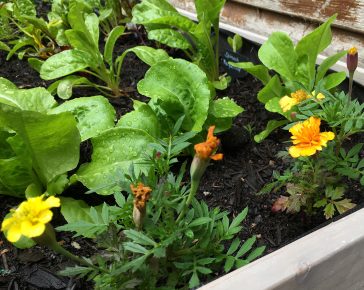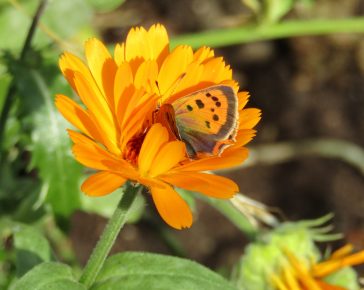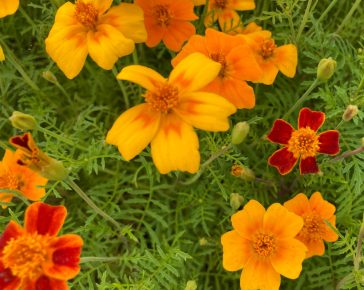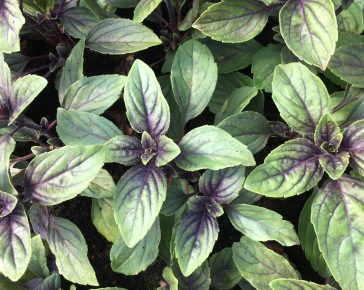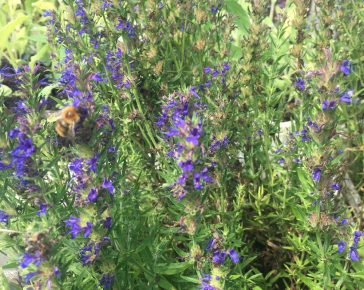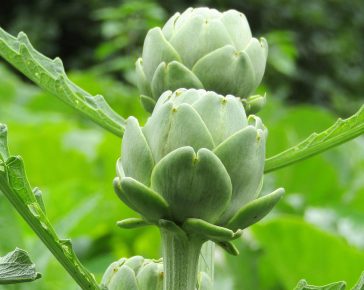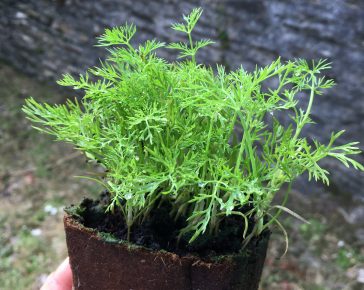Here’s a full guide on companion planting to help you get started with using flowers and herbs to help get the best from your veg crops. Some companion plants will attract pollinators and natural predators, like bees, ladybirds and lacewings, others will help to deter pests or act as sacrificial crops.

Using Companions as Sacrificial Crops
This is a tactic that can be employed to lure pests away from your veg plants by providing them with something tastier to eat.
Try planting a patch of nasturtiums a few metres away from brassica plants (like cabbages, broccoli etc) and cabbage white butterflies are more likely to lay their eggs on the nasturtiums than on the brassicas. We’d still advise covering brassicas with netting, but do find this an effective method.
If slugs are a problem, you could plant some sacrificial lettuces – let them bolt and they become even more attractive to slugs!

Use Companions to Deter Pests
We find this method of companion planting to be effective when used in conjunction with other ways of deterring pests, so would definitely suggest that even where you are using companions to deter pests, you also use other things, like mesh netting.
Tagetes in the greenhouse is a really good way to help keep the number of aphids down – they have a very strong scent which acts as a deterrent. You can also dot them in and around other crops grown outside.
Mint grown in pots and placed alongside beds of mizuna, rocket and other mustard greens can help wherever you have problems with flea beetles. The strong scent deters the flea beetles and if you cover the plants with a mesh netting as well, that will help. You could also try cutting full stalks of mint and laying them on the ground between rows of plants. Mint is said to be helpful to deter ants in the same way, cut and laid on the ground.)
Chives, onions and leeks can be planted between rows of carrots to help deter carrot fly.Use mesh netting as well though.

Companions to Attract Pollinators & Predators
Providing flowers to encourage pollinators, like bees, and natural predators like ladybirds and lacewings (which feed on aphids) is a useful way to work with companions.
There are so many ways to do this, and some easy wins are listed here:
- Plant tagetes and marigolds in amongst your veg crops to encourage ladybirds, lacewings and hoverflies.
- Plant basil in the greenhouse and let it flower to help encourage bees to pollinate tomatoes, chillies and aubergines (leave the windows ajar!)
- Grow plenty of herbs – marjoram, oregano, mint, lavender, chives – they are all wonderful for bees
- Create a mini wildflower meadow – you can plant plugs in a trug planter or an old wheelbarrow as a starting point.
Companion Plants to Try
Scroll through our companion plants below.


